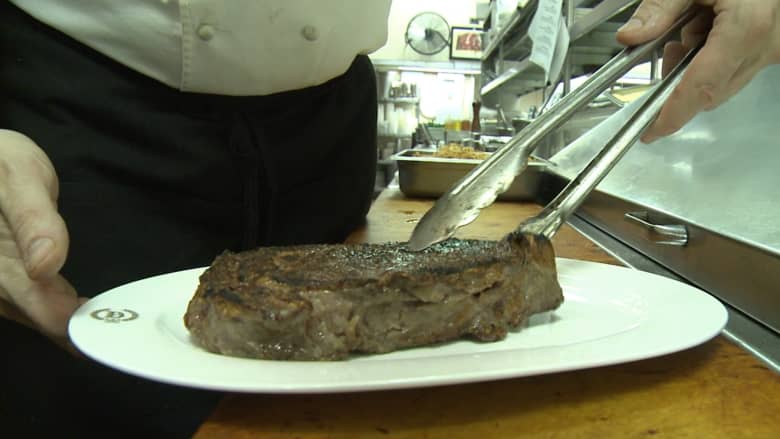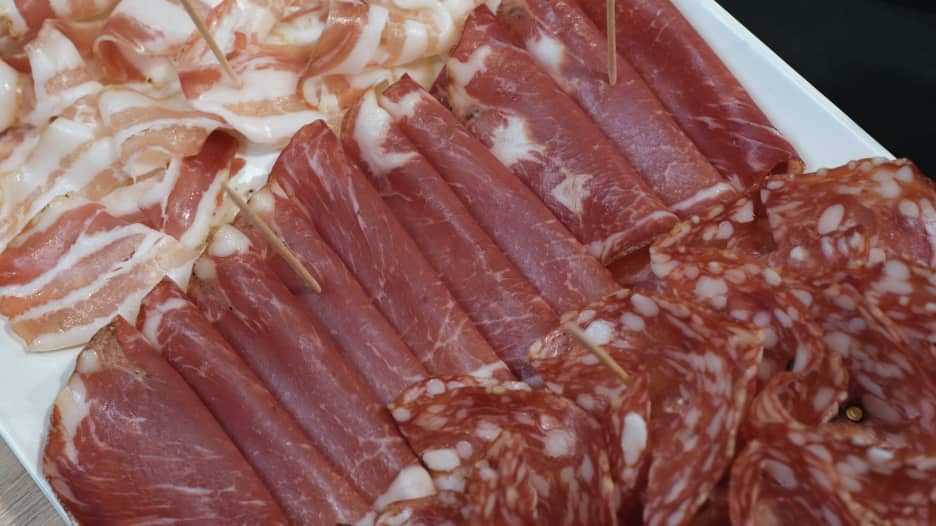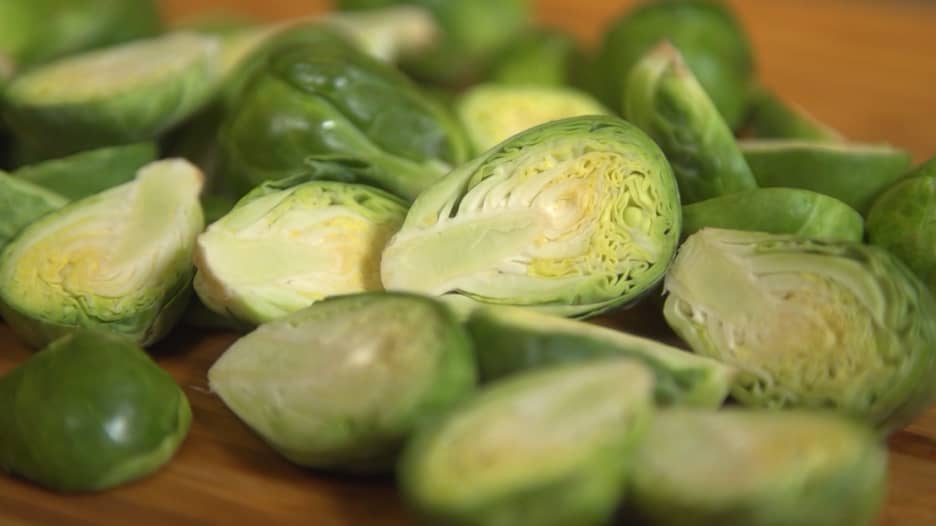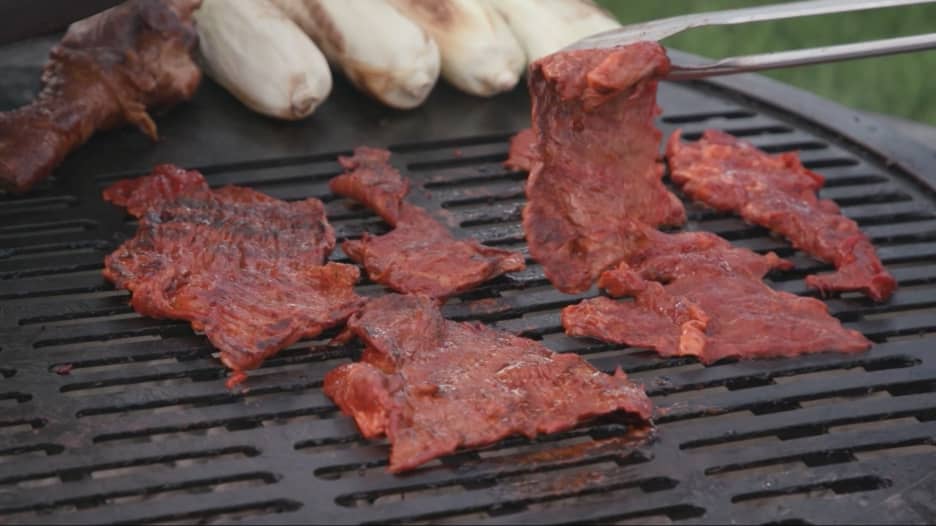دبي، الإمارات العربية المتحدة (CNN) -- من المرجح أن يؤدي تناول لحوم البقر والضأن واللحوم المصنعة إلى زيادة خطر الإصابة بأمراض القلب التاجية في وقت لاحق من الحياة، وفقًا لتحليل تلوي جديد للدراسات التي أجريت على أكثر من 1.4 مليون شخص، تمت متابعتهم على مدار 30 عامًا.
ويُطلق عليه أيضًا مرض الشريان التاجي، وهو السبب الرئيسي للوفاة والعجز على مستوى العالم، ويتطور هذا المرض عندما تتسبب الرواسب الدهنية للكوليسترول في تراكم الترسبات على جدران الشرايين التي تمدّ القلب بالدم.
وزادت مخاطر الإصابة بأمراض القلب التاجية مع زيادة كمية اللحوم، وفقًا للدراسة التي نُشرت يوم الأربعاء في مجلة "Critical Reviews in Food Science and Nutrition".
ومقابل كل 50 غرامًا من لحم البقر والضأن ولحم الخنزير، ارتفع خطر الإصابة بأمراض القلب التاجية بنسبة 9%.
وتبلغ الحصة الموصى بها من اللحوم حوالي 85 غرامًا، أي ما يعادل حجم قطعة صابون اليد، وفقًا لجمعية السرطان الأمريكية.
ولكل 50 غرامًا من اللحوم المصنعة، مثل اللحم المقدد، أو لحم الخنزير، أو النقانق، ارتفع خطر الإصابة بأمراض القلب التاجية بنسبة 18%.
وقالت المؤلفة المشاركة في الدراسة أنيكا نوبل، اختصاصية الأوبئة التغذوية في قسم صحة السكان بجامعة أكسفورد: "يبدو أن اللحوم المصنعة أسوأ بالنسبة لأمراض القلب التاجية".
وأوضحت نوبل أن "هذا يتماشى مع ما تم اكتشافه فيما يتعلق بسرطان الأمعاء، إذ ثبت أن اللحوم المصنعة مرتبطة بزيادة أكبر في المخاطر من اللحوم الحمراء".
لا مشكلة مع الدواجن
وقدّم التقرير أيضًا بعض الأخبار الجيدة، إذ لا يبدو أن هناك صلة بين تناول الدواجن، مثل الدجاج والديك الرومي، وزيادة خطر الإصابة بأمراض القلب التاجية.
وتعتبر اللحوم الخالية من الدهون، ومعظم أنواع الدواجن لا تحتوي على مستويات الدهون المشبعة الموجودة في اللحوم الحمراء، ولا تحتوي على مستويات عالية من الصوديوم التي هي جزء من اللحوم المصنعة.
وتلعب الدهون المشبعة دورًا رئيسيًا في تكوين طبقة على جدران الشرايين، وهي مساهم رئيسي في الانسدادات المرتبطة بأمراض القلب التاجية. كما يمكن للصوديوم أن يرفع ضغط الدم، ويقيد أيضًا تدفق الدم إلى القلب.
التحول إلى نظام غذائي نباتي
أظهرت الدراسات أن أفضل الأنظمة الغذائية التي يجب اتباعها لتقليل مخاطر الإصابة بأمراض القلب، هي الأطعمة النباتية. وفي تصنيفات أفضل نظام غذائي لصحة القلب من قبل شبكة "يو إس نيوز آند وورد ريبورت"، ترتبط حمية البحر الأبيض المتوسط بنظام حمية "داش" أي حمية فرط ضغط الدم، ونظام حمية أورنيش لأفضل نظام غذائي صحي للقلب.
وتم تصميم النظام الغذائي "أورنيش" في عام 1977 من قبل الدكتور دين أورنيش، مؤسس معهد أبحاث الطب الوقائي غير الربحي في ولاية كاليفورنيا الأمريكية.
ويزعم أورنيش أن هذا النظام الغذائي هو البرنامج الوحيد المثبت علميًا لعكس أمراض القلب في تجربة سريرية عشوائية بدون أدوية أو جراحة.
ومع ذلك، قال الخبراء إن النظام الغذائي مقيد ويصعب اتباعه.
وغالبًا ما يُنصح باتباع نظام "داش" الغذائي لخفض ضغط الدم، ويركز هذا النظام على تناول المزيد من الخضار، والفاكهة، ومنتجات الألبان قليلة الدسم مع تقليل تناول أي طعام غني بالدهون المشبعة، والحد من تناول الملح.
وتتضمن خطة الوجبات ثلاثة منتجات من الحبوب الكاملة كل يوم، وأربع إلى ست حصص من الخضار، وأربع إلى ست حصص من الفاكهة، وحصتين إلى أربع حصص من منتجات الألبان، وعدة حصص من اللحوم الخالية من الدهون والمكسرات، أو البذور، والبقوليات.
وأظهرت الدراسات أن اتباع هذا النظام الغذائي يمكن أن يقلل من ضغط الدم في غضون أسابيع.
وحصل نظام البحر الأبيض المتوسط الغذائي على الميدالية الذهبية لأفضل نظام غذائي بشكل عام في تصنيفات عام 2021. وهذه التصنيفات ليست مفاجئة، إذ وجدت العديد من الدراسات أن حمية البحر الأبيض المتوسط يمكن أن تقلل من مخاطر الإصابة بمرض السكري، وارتفاع الكوليسترول، والخرف، وفقدان الذاكرة والاكتئاب، وسرطان الثدي.
كما تم ربط وجبات منطقة البحر الأبيض المتوسط المشمسة بعظام أقوى وقلب أكثر صحة وحياة أطول.
ويتميز النظام الغذائي بطهي بسيط يعتمد على النباتات، حيث تركز غالبية كل وجبة على الفاكهة، والخضار، والحبوب الكاملة، والفاصوليا والبذور، مع القليل من المكسرات والتركيز الشديد على زيت الزيتون البكر. ولا يمكن استهلاك السكر المكرّر والدقيق إلا في حالات نادرة، ونادرًا ما يتم استهلاك الدهون بخلاف زيت الزيتون، مثل الزبدة.









